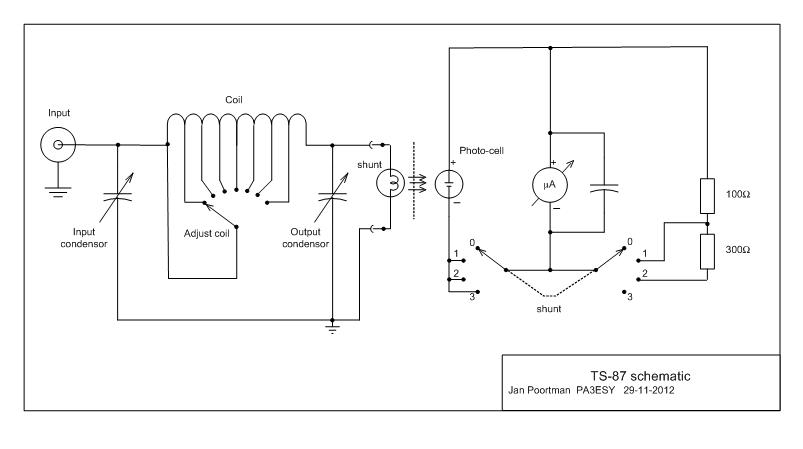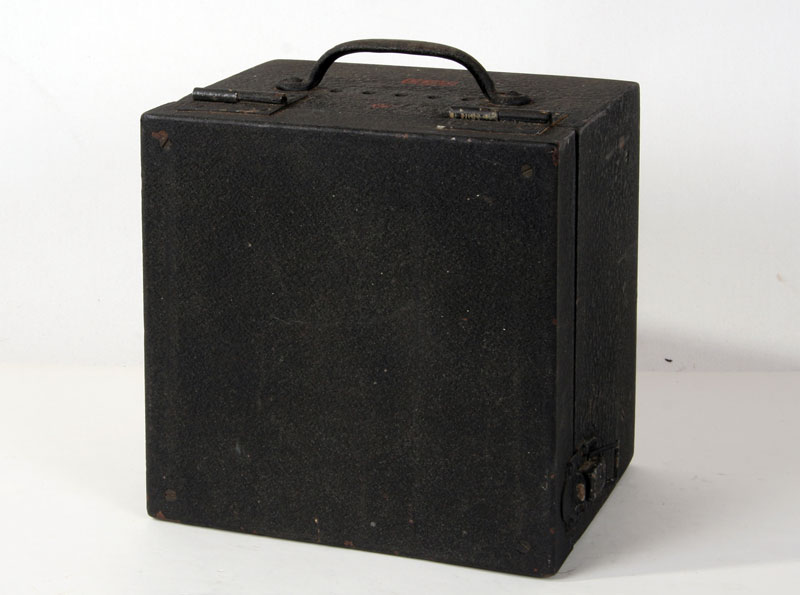
The blackbox.
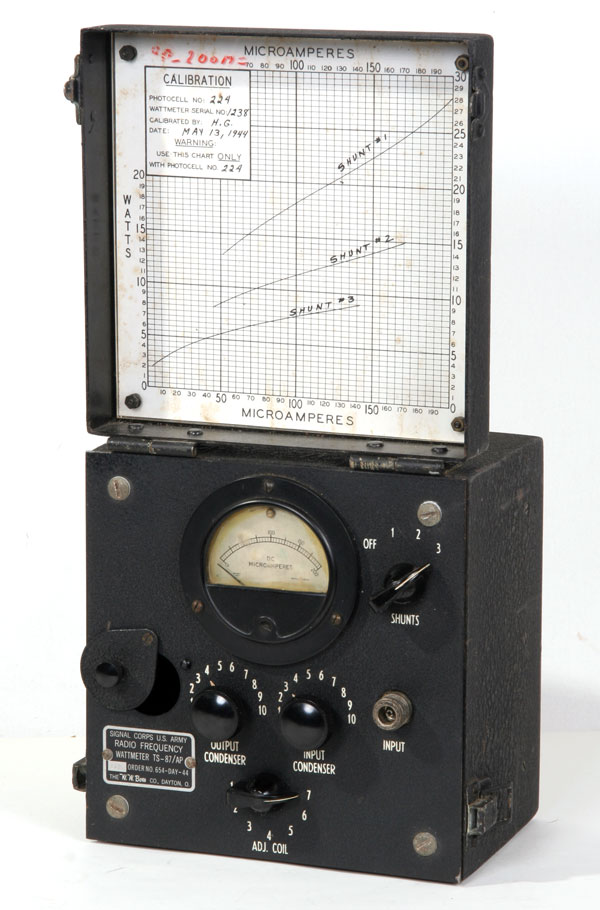
Opened, the calibrationcard on top and the instrument below.
Radio Frequency Wattmeter TS-87/AP is a class B general test equipment designed to measure the power output of relatively low power transmitters such as Radar Set AN/APT-3 and Transmitting Equipment AN/APT-1. A d-c milliameter is employed for direct reading and the power in watts is interpolated from an attached calibration chart. The wattmeter has a range of 2 to 30 watts over a frequency range of 85 to 220 mc. It is capable of measuring the power output of transmitters operating on CW and MCW modulated by noise, voice or tone. The accuracy of the instrument in measuring radio frequency power is ± 10 percent within its frequency-range.The equipment is being procured on an interim basis pending the quantity procurement of Radio Frequency Wattmeter TS-118/AP. Army Supply Program requirements as of 31 July 1944 were 375 equipments for the calendar year 1944. So it is a quiet rare type.
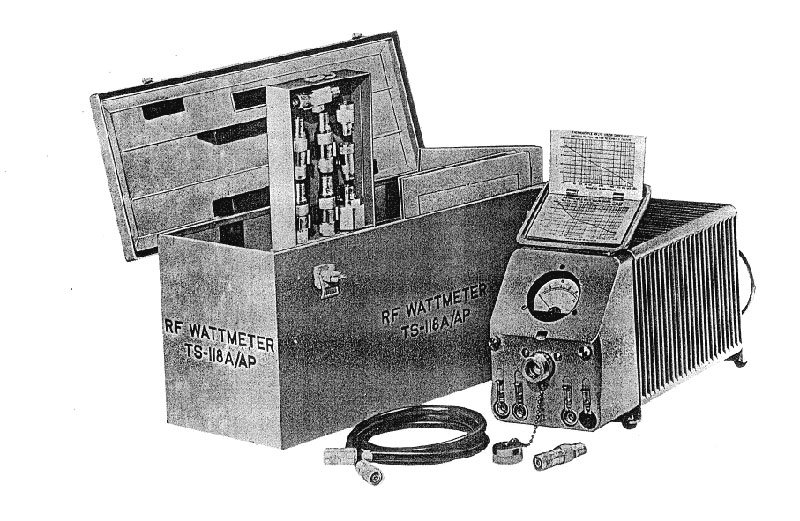
The successor, the RF Wattmeter TS-118A/AP, the military version of the Bird 693 RF Wattmeter.
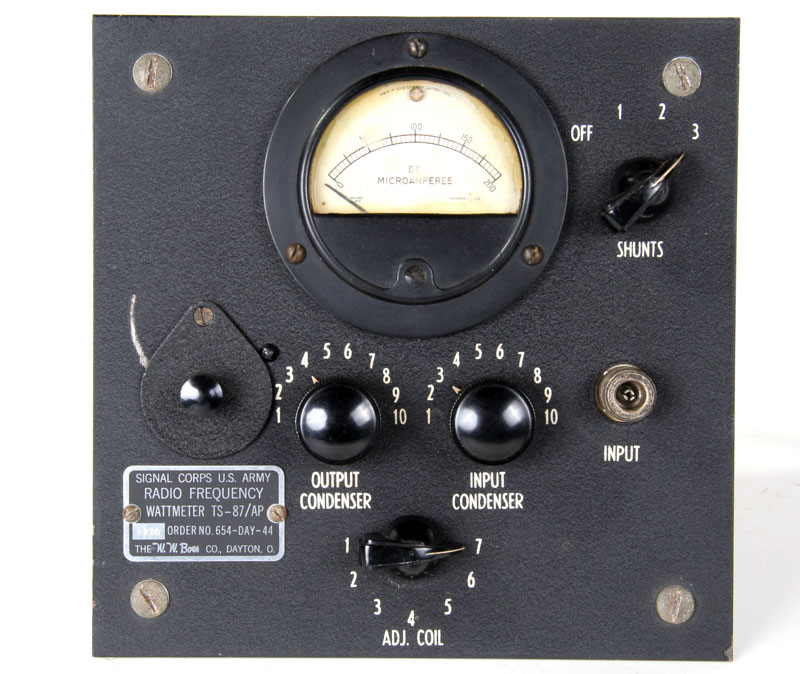
The meter's input N-connector, the alignment and the shunt setting. Behind the left side flap is the shunt. The in-and output- condensers together with the coil form a pi-filter that is tuned in such a way that a maximum light of the bulb is obtained.
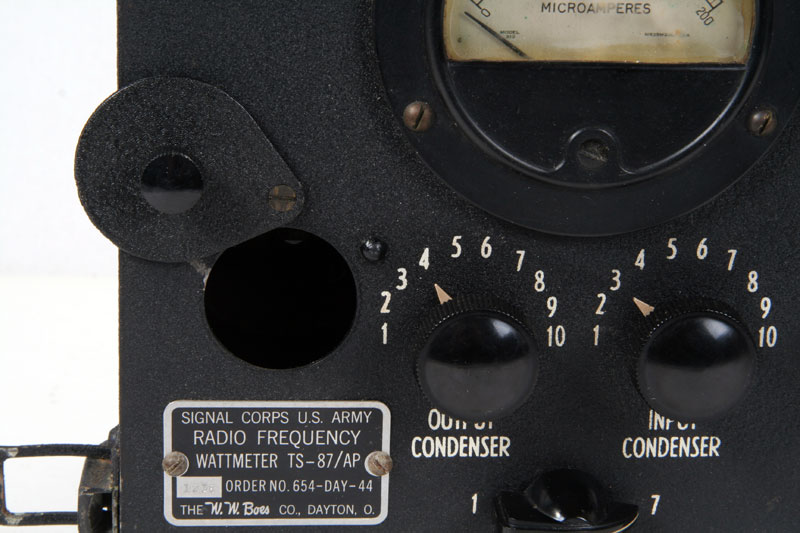
In this picture the flap is open, the lamp however is not visible. No power is measured.
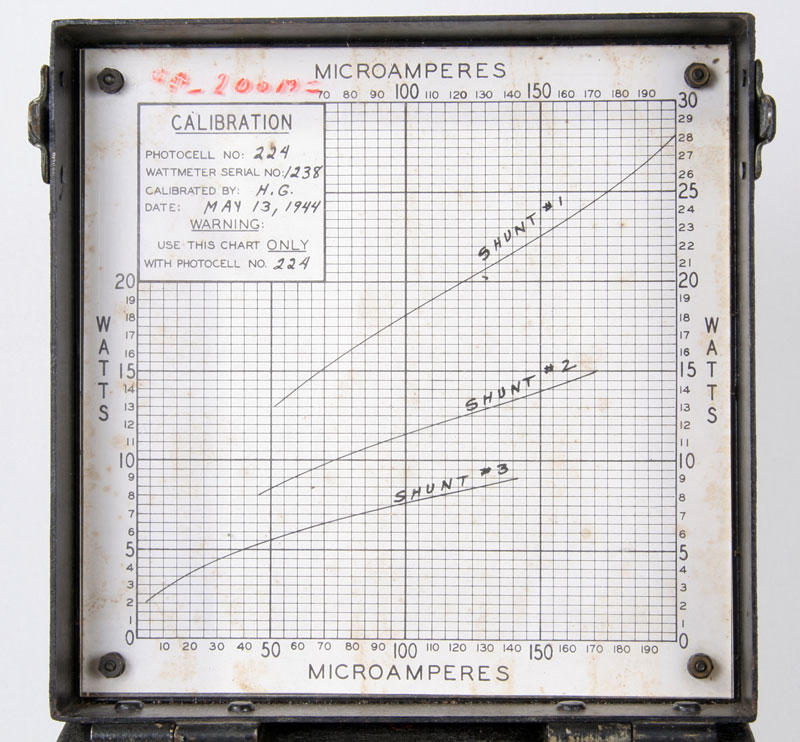
The calibration chart where the curves of three shunts are shown. By changing the lamps the amount of the power can bedefined.
Shunt 1 (lamp 1) has a range of about 13 to 28 watts, shunt 2 a range of 8 to 15 watts, and the third shunt runs from 2 to 9 watts.
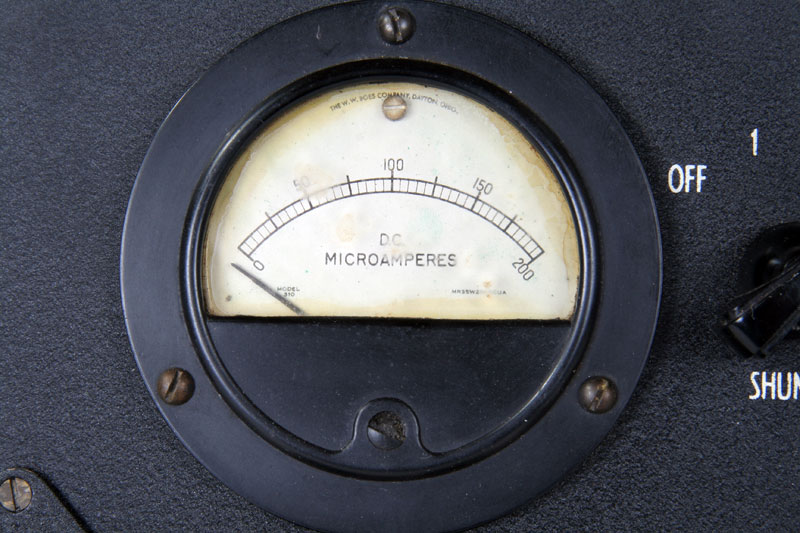
The measuring instrument with a range of 0 to 200 microamperes.
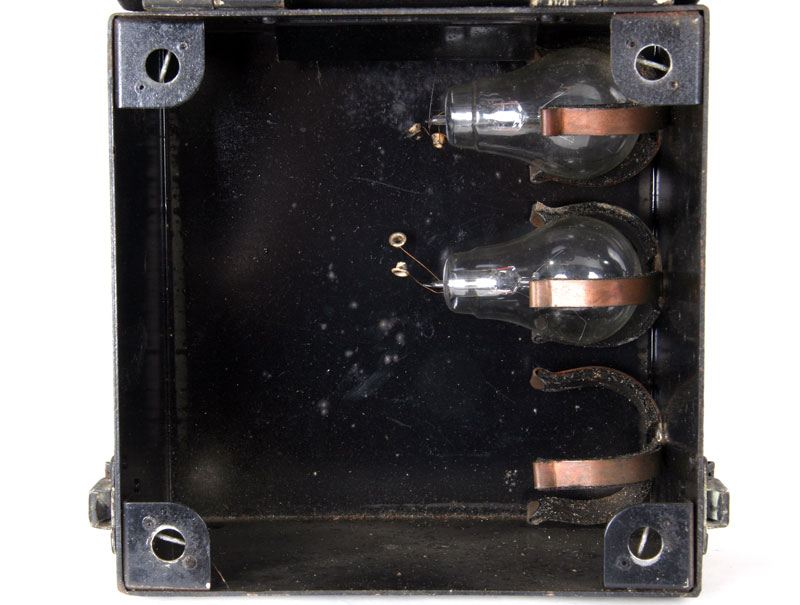
The two shunts in holders inside the cabinet.
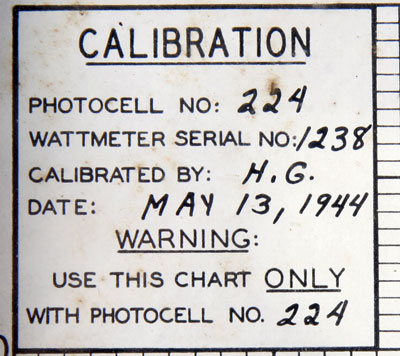
The device is calibrated with Photocell No: 224. This number is also found on the cell.
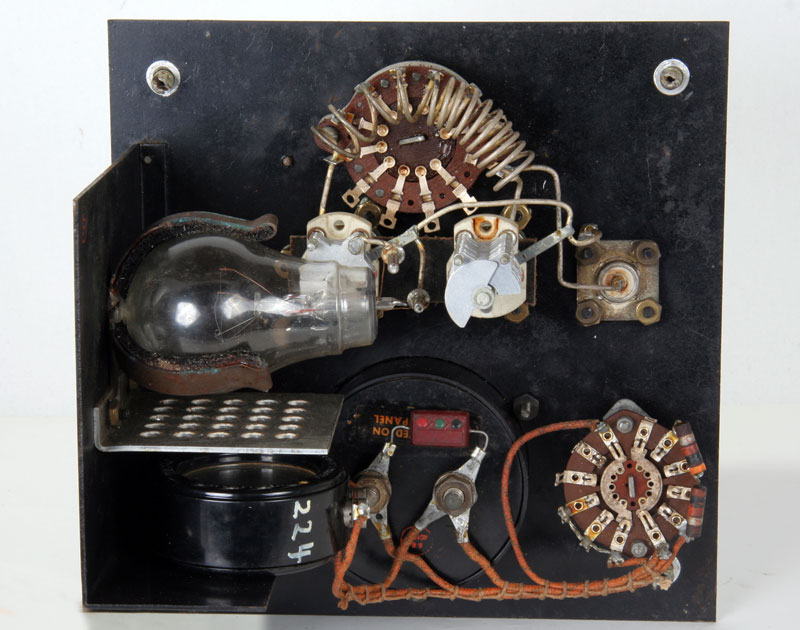
Tthe figure above clearly shows that the lamp illuminates through the grid the photocell (224)
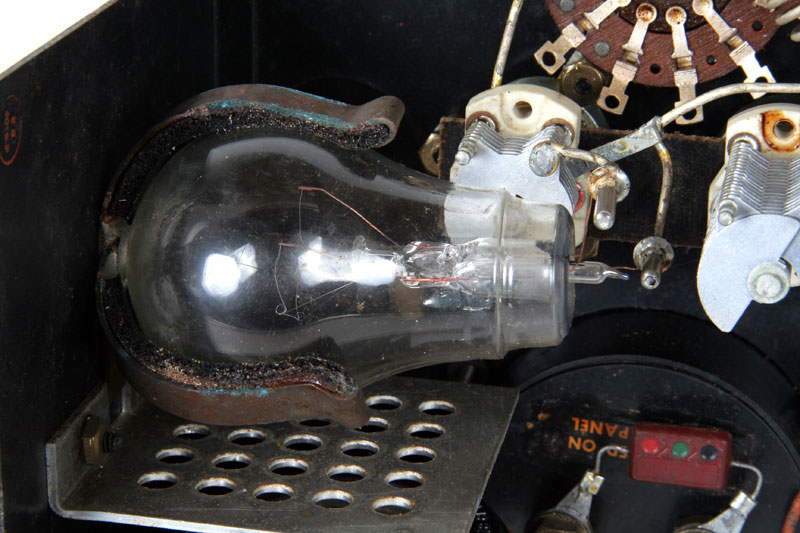
The lamp with the two removable connections.

The PI-filter with the two capacitors and the coil with 7 taps.
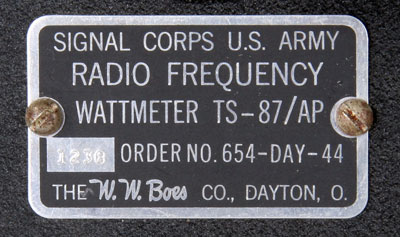
The type plate.
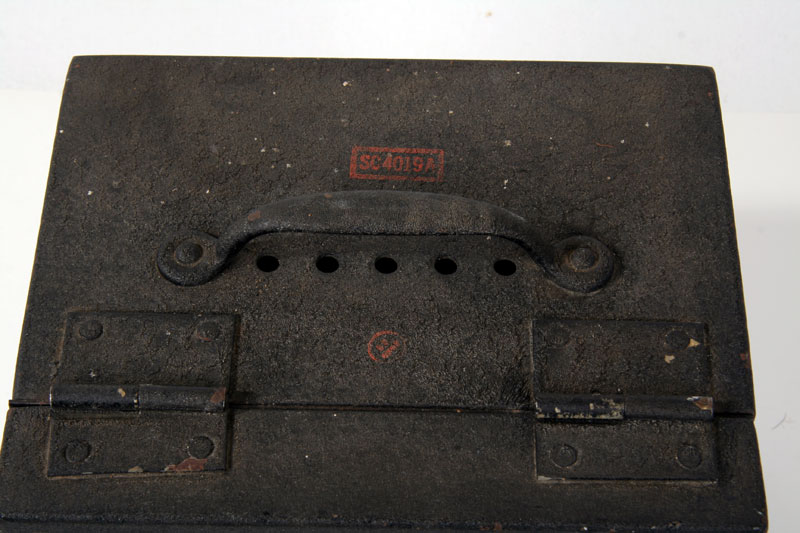
Under the handle there are heat-dissipation holes of the instrument.
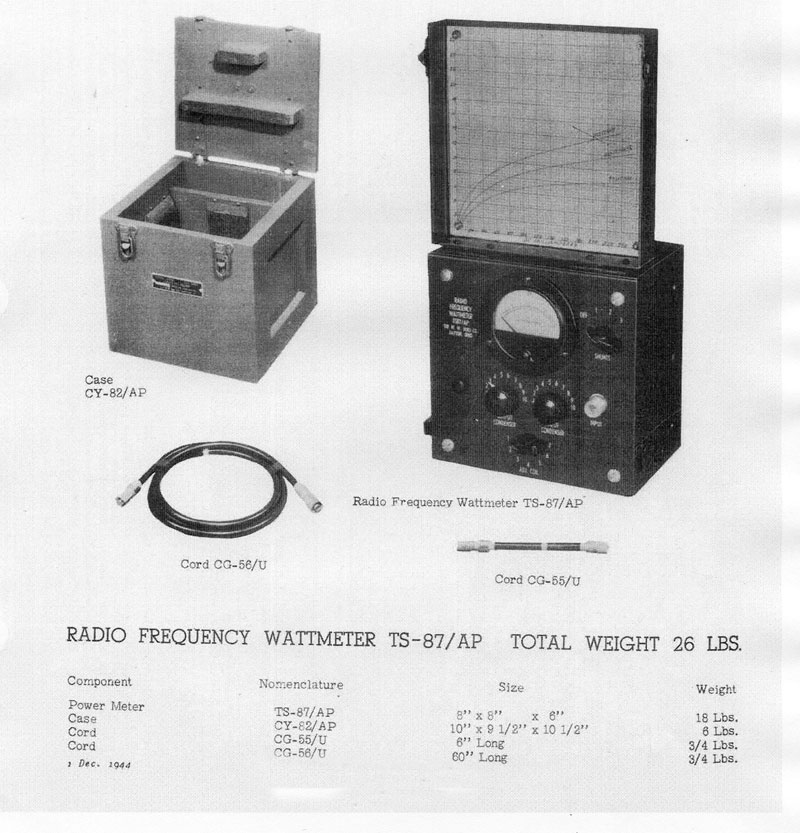
The complete equipment TS-87/AP.
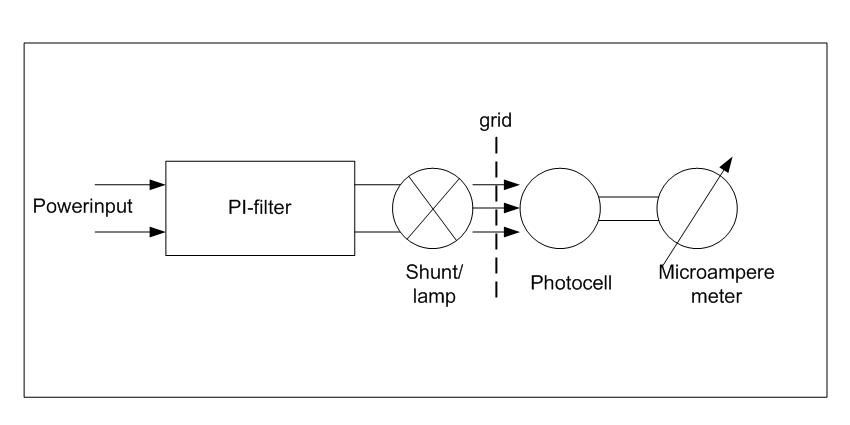
Principles of the TS-87 power-measurement.
Below the circuit of the instrument:
